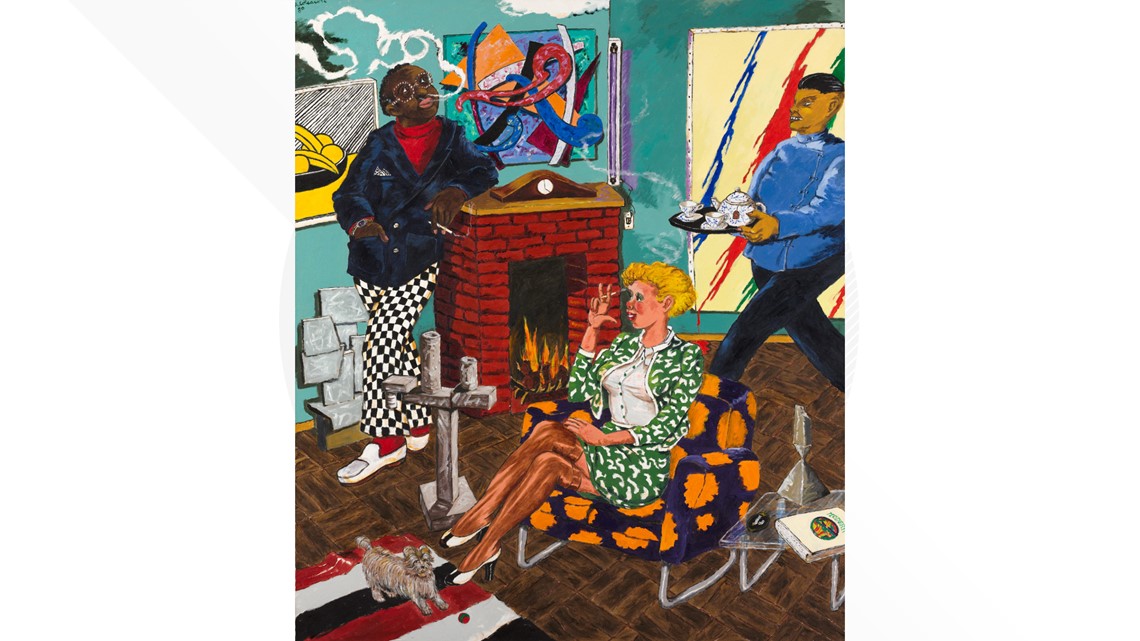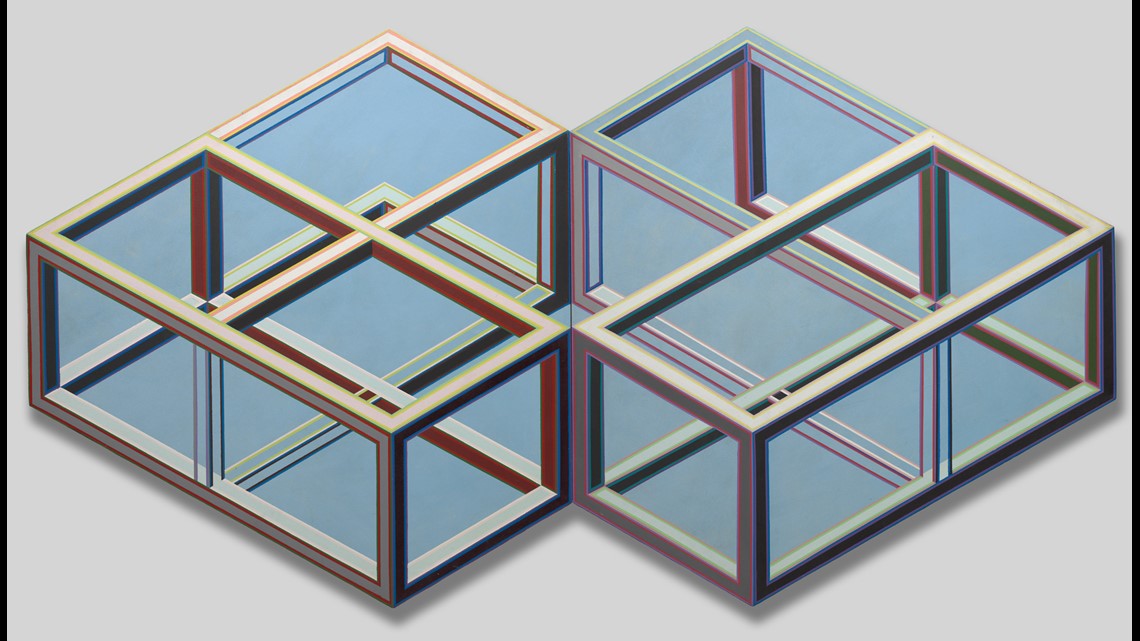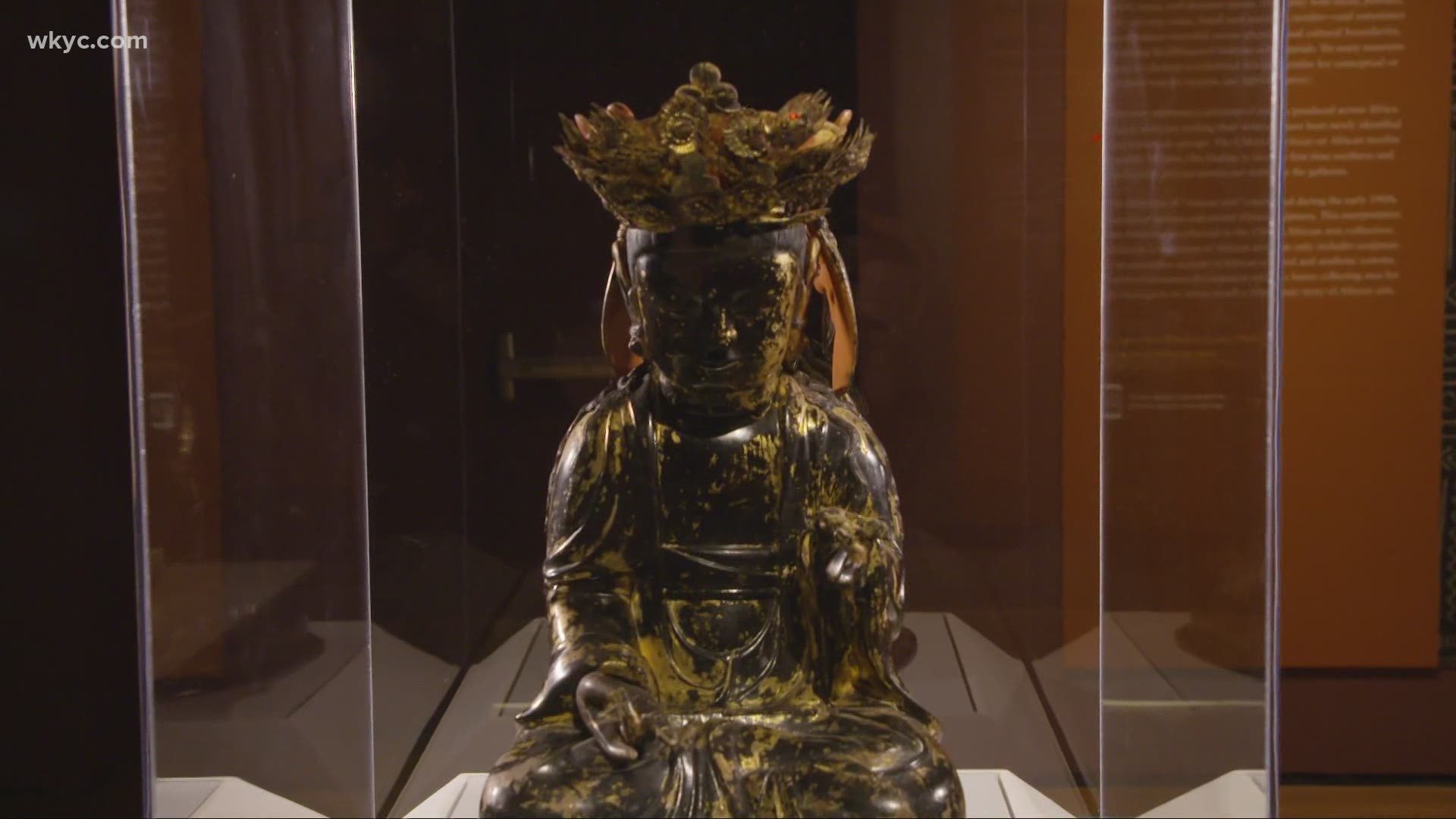CLEVELAND — Editor's note: The video above features another exhibit at the Cleveland Museum of Art.
The Cleveland Museum of Art (CMA) today announced the reinstallation of its contemporary art galleries, celebrating in particular work by women and artists of color.
The reinstallation is made possible with principal support provided by the Sandy and Sally Cutler Strategic Opportunities Fund.
The redesigned contemporary art galleries open Tuesday, April 20, in the S. Mueller Family Galleries of Contemporary Art including the Betty and Max Ratner Gallery, Toby’s Gallery for Contemporary Art and the Paula and Eugene Stevens Gallery.
“By prioritizing the work of diverse artists from around the world, this new installation demonstrates the wide range of perspectives, backgrounds and identities that animate contemporary art,” said William M. Griswold, director of the Cleveland Museum of Art.
“These galleries are the first to be reimagined in 2021 and are part of an exciting initiative undertaken in connection with our strategic plan, which calls for us to reinstall several galleries each year, enriching our visitors’ experience with new works, themes and interpretive approaches.”


Through four major themes, this installation explores the ways contemporary artists reimagine topics that endure throughout art history.
“This installation carries forward in time stories whose beginnings are told throughout the museum’s historic collections,” said Emily Liebert, curator of contemporary art. “Creating connections across time and place is one of the great opportunities of presenting contemporary art in an encyclopedic museum.”
The Figure features artists rethinking the possibilities of portraiture and representation of the body. Simone Leigh, whose Las Meninas is on view, describes her work as “auto-ethnographic”; she combines self-focused narratives with forms and materials typically found in African art. This interest in fusing histories and visual traditions is characteristic of other works in this section.
In Found and Made, some of the works are created with ready-made everyday objects like a light bulb or a chain-link fence, while others celebrate the quality of touch in the handcrafted. Still others bring these interests together: Vija Celmins’ Blackboard Tableau #12 features a pair of seemingly identical blackboards; however, one was found and the other was made by the artist. Through her observation of detail, Celmins generates an accord between the mass-produced commonplace object and the uniquely crafted one.
“Visitors will find that the new display includes conversations between longtime favorites and exciting recent acquisitions,” said Nadiah Rivera Fellah, associate curator of contemporary art.
Living Abstraction features works that are animated by associations with living matter. While Zilia Sánchez’s Troyanas (de la serie Módulos Infinitos) (Trojan Women [of the Infinite Module series]), on view for the first time since its 2020 acquisition, juts off the wall in three biomorphic peaks, the openings in Lee Bontecou’s untitled structure look like bodily orifices and lunar craters. The latter is a nod to Bontecou’s self-declared “joy and excitement about outer space.”


The artists included in Color, Shape, and Line use these foundational art elements to create dynamic compositions. As Al Loving expressed in 1969, “The wall must be pierced, brought forward, pushed back.” In his geometric abstractions, such as Blue Rational/Irrational, Loving evokes three-dimensional space on a two-dimensional surface through strategic layers of cubic forms and carefully calibrated juxtapositions of color. Innovations by the artists here created important legacies that have influenced generations of younger artists.
Visiting the museum’s permanent collection is always FREE to the public. Reserve FREE entry tickets here.
The museum’s hours of operation are Tuesday through Sunday, 10 a.m. to 5 p.m. The museum is closed Mondays. The last ticket reservation for the day is at 4 p.m. There will be no new entries into the museum after 4:30 p.m.
For more information about the museum’s safety procedures, please view the FAQ sheet on the museum’s website at cma.org.

